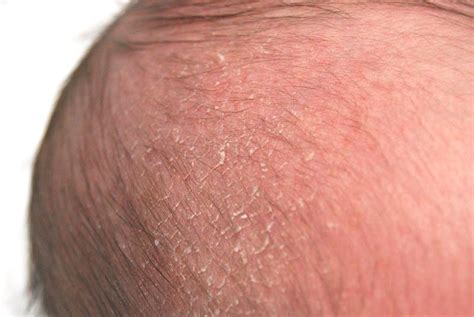Does your beautiful newborn baby’s head have a patch of skin that’s oily or crusty? That’s likely cradle cap and it’s a very common skin condition also known as seborrheic dermatitis. It can be found on baby’s forehead, face, behind the ears, in the diaper area, armpits, and other skin folds and creases. There’s no need for concern. Cradle cap usually clears up on its own after a few weeks or months.
Symptoms of Cradle Cap
- Patches of scaling or thick crusts on the scalp
- Oily or dry skin covered with flaky white or yellow scales
- Skin flakes (similar to dandruff)
- Possibly mild redness
Cradle cap is sometimes confused with atopic dermatitis. The major difference between these skin conditions is that atopic dermatitis usually causes significant itching. Cradle cap most likely bothers you more than baby.
How to Naturally Treat and Prevent Cradle Cap
Natural remedies are best:
- Wash your baby’s scalp daily or 2-3/week with a mild shampoo. This can help you loosen and remove the scales. Don’t scratch cradle cap and resist over washing.
- Apply an oil treatment. Put a tiny amount (about the size of a nickel) of a pure oil like organic olive oil, coconut oil or almond oil in your hand and then rub it gently onto your baby’s scalp. Leave the oil on for 15 minutes or so. Comb out any flakes and then wash the scalp with a mild baby shampoo. You don’t want to leave any oil behind to clog the pores.
- Treat with baking soda. Instead of using an oil, you can mix equal parts baking soda and water to form a paste. Then apply the paste directly to the scalp and let it sit for a minute. Wash off the past with a gentle baby shampoo. Whether using oil or baking soda, you can apply the treatment right before bath time. That way you can rinse it off easily during the bath.
- Moisturize after shampooing. Apply a gentle natural baby moisturizer when baby’s scalp is still damp and warm to help trap moisture in the skin. This can help to prevent the scalp from becoming dry and scaly or decrease any that is already present.
- Daily Brushing. First, gently massage your baby’s scalp with your fingers to loosen the scales. Then lightly brush your baby’s scalp with a soft brush to further loosen the scales and sweep them away.
- Use a humidifier. Adding more moisture in the air will help decrease baby’s skin dryness.
What Causes Cradle Cap?
The cause of cradle cap isn’t known. One contributing factor may be hormones that pass from the mother to the baby before birth. These hormones can cause too much production of oil (sebum) in the oil glands and hair follicles.
Another factor may be a yeast (fungus) called malassezia that grows in the sebum along with bacteria. Antifungal treatments, such as ketoconazole, are often effective, supporting the idea that yeast is a contributing factor.
Cradle cap isn’t contagious, and it’s not caused by poor hygiene.
If cradle cap persists, spreads to your baby’s face or body, your doctor may suggest a medicated shampoo, lotion or other treatment.






